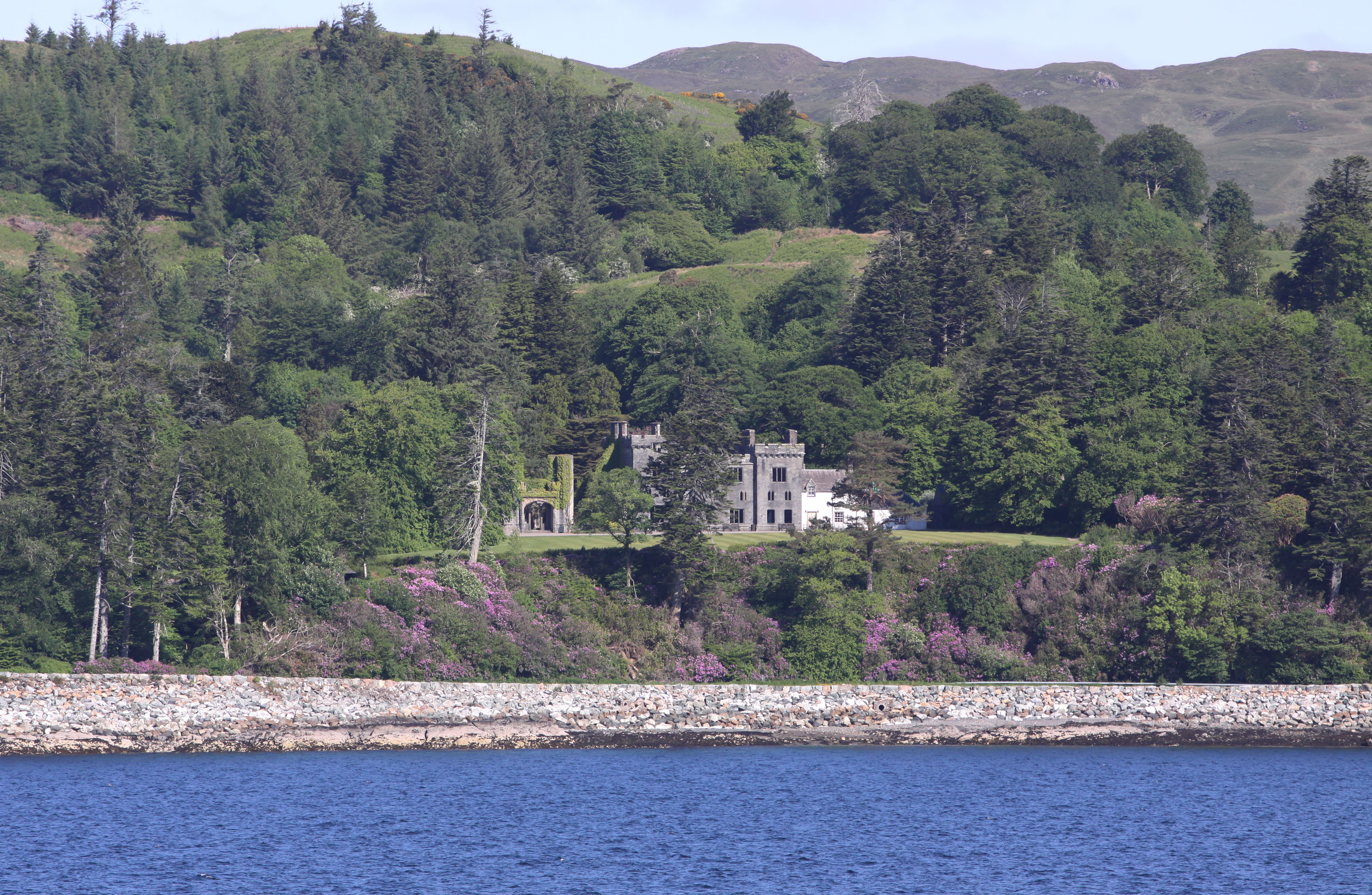Clan battle: Why Scottish land reforms can't help community fighting Skye estate sale
Rob Ware was “killing some time” early on a March morning when he came across the news: Clan Donald’s ancient holdings were to be sold, all 20,000 acres of them.
Covering beach and brae, loch and landmark, the crofting territory stretches across Skye’s southerly Sleat peninsula, where the land is locked into the island’s economy.
Generations have worked and lived there. In the 1970s the land was put up for sale following the death of Alexander Godfrey Macdonald, 7th Lord Macdonald and High Chief of Clan Donald. It has been owned since then by the Clan Donald Lands Trust (CDLT), a charity formed to facilitate the purchase.
The trust serves and is largely funded by members of the Macdonald diaspora to promote and preserve its history and heritage. Its assets include holiday accommodation, a café and Armadale Castle, gardens and the Museum of the Isles, which provide jobs.
Lot one – the land – was marketed by London-based agent Strutt & Parker in April, three days after the news broke. Lot two – the castle – has just been listed and is available to potential buyers for sale on its own for around £1m, or with associated cottages, cabins, workshops and woodlands for a combined price in the region of £2.76m. Either way, everything must go.
“Why now?”, said CDLT in a statement, announcing the “unexpected ending of the longstanding grant funding” which had underwritten losses at Armadale “for decades”.
“Armadale does not have sufficient visitor footfall to be commercially viable,” the trust said, and “without substantial investment this will not change”. “However,” it went on, “the CDLT was not established to invest in speculative Highland destination tourist ventures.”
Ware, the secretary of Sleat Community Council and a former director of tourism management body SkyeConnect, was stunned and spread the word. “I happened to find out by chance,” he said. “By 9am [the news had spread like] wildfire.”

Rob Ware | Contributed
The news spread one day before MSPs convened to vote on stage one of the Land Reform (Scotland) Bill, the latest attempt to modernise the sale and usage of the ground beneath our feet.
If passed, it would bring in new requirements for land management plans and oblige certain landowners to consider rental bids from community bodies. It would also give such groups prior notification about sales and give them more time to register interest for any purchase. And it would give ministers the power to step in to halt transactions in the public interest, splitting super-sized lots into smaller parcels to help local people take a stake, thereby democratising ownership in a country where 67 per cent of rural land is owned by 0.025 per cent of the population.
It is super-sized swathes such as the CDLT’s which are the focus of these measures, with the land management plan requirement applying to holdings of 3,000 hectares and new sale rules to those of 1,000 hectares.
The Sleat situation is a “topical example that goes to prove why the measures that we are introducing in the bill are important”, according to Mairi Gougeon, Cabinet Secretary for Rural Affairs, Land Reform and Islands. “They could have prevented the situation from coming about or, at least, the community could have been notified that the land would become available for sale.”
But for North East MSP Mercedes Villalba it is a “glaring example of why the bill needs to be substantially strengthened”. “The trust manages 20,000 acres of land, which is used for agriculture, crofting, deer and woodland management, wild fisheries and renewables,” said Villalba, who wants a limit of 500 hectares on the aggregate amount of land any person can own without meeting a public interest test. “No advance notice was given to the community, and no public interest test will be applied. The Scottish Land Commission is currently powerless to do anything about it, and it will continue to be powerless unless the bill is drastically amended.”
As it stands, the CDLT is under no obligation to give the community first refusal on its assets.
And anyway, at an asking price of offers over £6.75m for this first package, it is not going for small change. Including woodlands, common grazing and more, the land’s potential use for carbon sequestration and renewable energy is highlighted to potential bidders. This is, they say, “a unique opportunity to own the majority of a renowned and historic peninsula”.

Between 2020 and 2022, the value of rural land increased by almost 60 per cent in some areas, with hikes highest in the north east and south west. The period saw overseas investors buy up woodland and peatland for carbon credits. Most sales over that time were of “moderately-sized” holdings, with 93 per cent of transactions featuring parcels of fewer than 500 hectares.
But more than half of the country’s land is bundled up into parcels in excess of 1,000 hectares – the size targeted by the bill. Danish billionaire Anders Povlsen, the biggest private landowner in Scotland, holds around 89,000 hectares across several estates. And while such properties have scenery, character and potential in spades, their scale is such that only 20-30 transactions take place every year.
Robert McCulloch, head of Scotland at Strutt & Parker’s estates and farm agency department, said the market “has been extremely dynamic in recent years” thanks to interest in things like the potential for carbon credits through peatland restoration and forestry, but is currently experiencing something of a “slowdown” underlined by factors like changed tax rules for non-doms, Trump tariffs and, yes, the Land Reform (Scotland) Bill. Buyers have “an eye on the future value” of any potential purchase, McCulloch said, and need to consider “what the exit route looks like” if they have to sell quickly. And so, there is currently a “reticence to engage”. “It takes a few transactions” to build up market confidence after any reform, he stated, and those who are “more prepared to embrace risk” go in first. “The time to be able to definitively say this proposed legislation is having a marked impact on the market is the end of the year.”
At the other end of the scale, community ownership extends to around 200,000 hectares of land. Previous reforms have given tenant farmers pre-emptive rights to buy, which the government says is allowing families to invest and develop their businesses. And, aside from all that, the Scottish Government itself owns a total of 728,000 hectares.
According to parliament’s Net Zero, Energy and Transport Committee, which has probed the bill, “viewed internationally, Scotland remains an outlier in terms of concentration of ownership and the average size of estates, despite prior reforms”. “Many stakeholders agree that reform has lost momentum, and that further change is needed,” the committee said.
But not all members said they would support the bill at stage one, and the panel agreed “significant change will be needed” to ensure the measures deliver against the Scottish Government’s policy objectives. More work is needed on encouraging the leasing of land for agriculture, it said, and threshold for community engagement requirements should be reviewed.
“We support giving Scottish ministers the ability to determine that large landholdings should be sold in lots,” convener Edward Mountain said. “However, the basis on which such decisions would be made is unclear. We recommend that the transfer test in the bill be reconsidered to make it clear that the public interest will at least be at the heart of lotting decisions. We also recommend that guidance be produced to provide more clarity about the circumstances in which Scottish ministers would or would not expect to make lotting decisions.”
In Sleat, the community council would like to see a halt to the CDLT sales process and states that there has been “zero community engagement” on the matter.
CDLT, which has trustees in the US, Yorkshire and London, has said it will “endeavour to ensure that the future purchaser of Armadale will be in the position to provide a brighter future for the local community”. And it said it has had “especially positive responses from longstanding local community members” about a proposed “local sale liaison group”, which is described as being “at a very early stage”.
“Over the decades CDLT charitable trust has invested tens of millions into Sleat. This exceptional investment could not continue forever, and it is time to welcome new capital, resources, and opportunities,” a spokesperson told Holyrood. “The sale liaison group was established by CDLT from 1 April. Since then, we have engaged closely and positively with Sleat Community Trust, crofting representatives, and the tenant farmer. This includes positive meetings with Sleat Community Trust and a helpful introduction and briefing note for potential buyers from the crofters.
“This is a good start, and we look forward to further close engagement. When serious buyer interest is confirmed, the group will hopefully meet those parties and work together towards the best possible outcome. A common theme from local discussions is that a successful sale and working together is in everyone’s interests.”
With sales of such assets taking an average of one year to complete, there may be scope for significant work between the trust and locals.
But Ware said the CDLT comments on engagement “should be taken with a pinch of salt”. The community council has had “significant difficult in engaging with the trustees and the chief executive officer”, he said, and a protest in the village of Armadale shows the strength of opposition to the sale.
Regardless of any future information-sharing, Michael Russell, the ex-minister now
chairing the Scottish Land Commission, said more should have been done already. In a statement, he said that though there isn’t currently a legal requirement to give prior notice of the sale to the community, that “should be considered responsible practice”. “Given the significance of the landholding and its future ownership to all who live and work there, we urge the seller to take sufficient time to engage with the community and enable them to properly explore their options,” he stated, highlighting the potential of the Land Reform Bill to prevent such occurrences in future.
For now, Ware is worried about the future, saying there are “very serious long-term concerns for tourism and sustainability”. “Nobody knows what will happen next,” he said. “Nobody knows who the buyer will be or what the economic impact will be.
“People in the community respect the estate, they respect its importance. A lot of people have been employed there, it has been a big part of life.”
A public meeting on the matter was attended by around 150 people, including a former CDLT trustee, and a community buy-out was discussed. But realistically, Ware said, there is no money readily available for a local bid. But he believes the provisions of the Land Reform (Scotland) Bill could have bought some time, had they been in place. “Even if the community couldn’t have bought it, it would have allowed for the galvanising of external funders to say ‘there’s an opportunity to turn this into something really successful’.
“We are in a period of great uncertainty.”
Holyrood Newsletters
Holyrood provides comprehensive coverage of Scottish politics, offering award-winning reporting and analysis: Subscribe